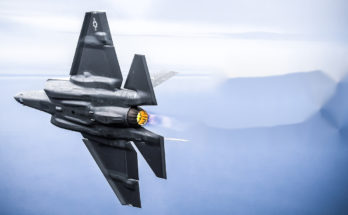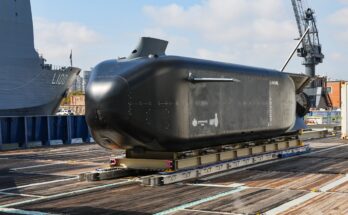by Derek Bisaccio, Military Markets Analyst, Forecast International.
Recently, the CEO of Russia’s Rostec, Sergei Chemezov, sat down with The Wall Street Journal for an interview on a range of subjects pertaining to the company.[i] The interview covered a number of important ongoing topics, touching on Russia’s domestic defense industry as well as its export market. Rostec is a Russian conglomerate that comprises a number of businesses. It has 14 holding companies, five of which are geared toward the civilian market and nine that specialize in military products.
Domestic Industry
Russia’s defense industry receives a significant number of contracts from the country’s armed forces. Though domestic demand dropped during the immediate aftermath of the fall of the Soviet Union, Moscow has recently been engaged in a rearmament program intended to modernize and professional the various branches of the military, which has resulted in substantial orders for the local defense industry.
Recent sanctions imposed on Russian companies combined with a collapse in oil prices have put financial pressure on Moscow, causing a decrease in defense orders. Chemezov asserts that the reduction is “not to the point of being critical for our industry,” though he did note he believes “government defense orders will be reduced by about 10 percent” for 2016.
Sanctions, particularly those from Ukraine, have limited Russia’s access to some crucial components that it relied on for its military programs. Chemezov noted that material that used to come from the U.S. or European Union is now being made domestically. The process of providing alternatives to Ukrainian equipment, however, has taken longer, due to the quantity of components that Russia relied on Ukraine for. Chemezov told The Wall Street Journal, “The schedule is to have it done in 2017.”
Financial trouble and access to parts have certainly caused some military programs to be scaled back. However, according to Chemezov, the T-14 Armata will not be canceled or stalled. He stated that the tank is “already in serial production,” seemingly putting it ahead of schedule (The Diplomat pointed out that these could well be prototypes intended for trials[ii]). Previous reports have indicated that the tank was due to enter serial production in 2017 or 2018.
Rostec is also considering selling minority stakes in its subsidiaries – up to 49 percent. For KRET, which produces radio-electronic systems, Moscow likely will not allow foreign investors, but “already a sufficient number of our own Russian investors have turned up.” Russian Helicopters, however, is open to foreign investment and has held talks with companies in the United Arab Emirates.[iii]
Export Market
Chemezov noted that demand from foreign customers allows the Russian industry to avoid “particularly big economic pressures from the financial market, because there’s an opportunity to export abroad.” All arms exports are handled through Rosoboronexport, a subsidiary, which completed export orders worth $15.2 billion in 2015 and anticipates a similar volume for 2016.[iv]
Chemezov discussed the potential arms contract with Iran, in particular. He pointed out the possibility of an $8 billion deal for a list of weapons that varies from submarines to fighter jets, “but so far there’s no such deal” and discussions have led to “nothing concrete.” Though Russia provides assistance in financing civilian projects, the military acquisitions are solely funded by Tehran, according to Chemezov.
The transfer of the S-300 PMU-1 air defense systems to Iran has recently been delayed, seemingly due to a lack of Iranian payment. It was initially reported to begin earlier this year, but now “the first delivery will be in September or August.” Chemezov confirmed that it will be S-300 PMU-1s, not S-300VMs.
Turning to China, Chemezov addressed the Su-35 sale that was reported in November of last year.[v] He stated that the deal “hasn’t come into effect,” because “it has to be ratified by our side and the Chinese side.” He noted that such ratification takes “a long period” and could be finished by the summer, or the fall at the latest. No deliveries will be made in 2016.
Rostec’s Future Plans
Though sanctions and the collapse of oil prices have hurt Russian industry, Chemezov seems confident in Rostec’s ability to adapt. Moving forward, Rostec understands that the volume of current orders from the government will not be sustained forever, particularly after the State Armaments Program reaches completion in 2020. To account for this, Rostec intends to diversify through expansion of its civilian enterprises. According to Chemezov, Rostec has “set a goal for the heads of all our businesses to increase the percent of civilian products they make to 50 percent by 2025.”
Defense contracts will not completely end after 2020. Chemezov pointed out that “the Army will still need replacements for older things and will buy new things, but it won’t be these volumes.” Rostec will continue to provide modernized and new equipment to the military, and has used the Syria deployment as somewhat of a “testing ground” to see where corrections or modifications need to be made.
[i] Rostec, “WSJ Q&A With Sergei Chemezov,” March 14, 2016. http://rostec.ru/en/news/4517839
[ii] Franz-Stefan Gady, “Is Russia’s Deadliest Tank Already in Serial Production?” The Diplomat, March 15, 2016. http://thediplomat.com/2016/03/is-russias-deadliest-tank-already-in-serial-production/
[iii] Tass News Agency, “Russia in talks with Arab foundation Mubadala on selling stake in Russian Helicopters,” March 11, 2016. http://tass.ru/en/defense/861576
[iv] RT, “Russia plans more than $15bn arms exports in 2016,” December 30, 2015. http://www.rt.com/business/327427-russia-arms-export-2016/
[v] Wendell Minnick, “Russia-China Su-35 Deal Raises Reverse Engineering Issue,” Defense News, November 20, 2015. http://www.defensenews.com/story/defense/air-space/strike/2015/11/20/russia-china-su-35-deal-raises-reverse-engineering-issue/76102226/
For further information on this and more topics related to country-by-country military expenditures, force structures and other defense-, security-, economic- and political-related issues please see Forecast International’s International Military Markets series.
For 50 years, Forecast International intelligence reports have been the aerospace and defense industry standard for accurate research, analysis, and projections. Our experienced analysts compile, evaluate, and present accurate data for decision makers. FI's market research reports offer concise analysis of individual programs and identify market opportunities. Each report includes a program overview, detailed statistics, recent developments and a competitive analysis, culminating in production forecasts spanning 10 or 15 years. Let our market intelligence reports be a key part of reducing uncertainties and mastering your specific market and its growth potential. Find out more at www.forecastinternational.com




